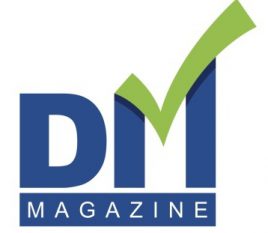 By Alexandra Conza
By Alexandra Conza
Across the marketing industry, artificial intelligence has become the new operational standard for high-performing teams. While the most visible (or at least, most touted) example of AI-generated copy and images may get most of the attention, the true measure of its impact lies in the less glamorous, operational side of the work: project timelines, review cycles, and the time it takes to ship creative into new markets. These changes enable marketing teams to work faster and scale their efforts, freeing them from manual tasks to focus on the strategic work that delivers better business results.
Where AI Delivers Speed in Global Marketing
This operational shift is especially clear in how marketing teams approach global campaigns. AI-powered translation and localization, for example, transforms what was once a final, time-consuming bottleneck into an integrated part of the core strategy. By embedding this capability directly into their workflow, marketing teams are scaling campaigns across new markets with greater speed and efficiency. The outcome is a direct and measurable impact on campaign timelines, global reach, and ultimately, marketing ROI.
For many brands, this means shaving days or even weeks off the production calendar by eliminating manual, repetitive work. At the global marketing agency Wunderman Thompson, for instance, one unit turned what used to be a slow email relay into a sprint by using Smartcat’s translation and localization AI to automatically surface approved brand terminology and automate project workflows. The language-learning company Babbel saw a similar process transformation by connecting its content systems directly to Smartcat, transforming a clunky, ticket-driven workflow into a seamless pipeline. This single change gives the team back roughly thirty-one staff hours every month. The effect on project timelines is just as direct. Travel brand Welcome Pickups, for instance, cut its site-translation turnaround time by more than half. When routine tasks like these disappear, marketing can finally move at the speed of opportunity.
Fueling Top-Line Growth
Beyond creating operational efficiencies, the speed delivered by AI also drives top-line growth. For travel brand Welcome Pickups, the impact was immediate: its localized landing pages booked sixty-six percent more rides than their pre-pandemic equivalents, a lift that added roughly two percent to the company’s overall revenue. Wunderman Thompson converted the same efficiency into income. With the same headcount, the agency now handles thirty percent more client projects, turning surplus capacity into fresh billable work.
Ultimately, these are just a few examples of how AI can do more than simply trim expenses from a budget, but create measurable top-line growth that finance leaders can see on the balance sheet.
Scaling Localized Engagement Globally
AI also fundamentally changes the economics of scaling a brand and content globally with speed and consistency. Babbel, for example, serves ten million learners in fourteen languages. Its content spans everything from push notifications to video scripts, yet the company maintains a single, consistent voice through an automated translation and review workflow.
This ability to manage complexity at scale also extends to client work. Wunderman Thompson manages Amazon storefronts for one hundred fifty clients across nine marketplaces, relying on AI-powered glossaries and translation memory to keep product pages compliant and conversational. The financial efficiencies even create their own opportunities for growth; the thirty-two-thousand-dollar savings Welcome Pickups realized in three quarters funded new language launches, allowing the brand to enter fresh markets without ballooning its budget. With AI platforms like Smartcat handling the heavy lifting, geography turns from a barrier into a variable that marketers can adjust as easily as ad spend.
Advice for Marketers Implementing AI
The shift to AI-powered marketing is already well underway. Leaders who want to define the future of marketing rather than react to it must integrate AI with a clear strategy. Here are three strategic principles to help guide that process.
1. Build a Strong Foundation for AI
Before deploying AI at scale, it’s crucial to have the right foundation in place. AI is only as effective as the data it works with, so start by strengthening your data infrastructure. Once your data is clean and accessible, onboard your AI systems with the same care you would a new employee. This means establishing clear brand guidelines, strict data privacy protocols, and firm ethical standards from day one to create complete alignment with company values. This protects both brand integrity and customer trust.
2. Pair AI Automation with Human Strategy
The most effective marketing teams use AI to eliminate repetitive work, not to replace strategic thinking or creativity. While AI is exceptionally good at automating processes and analyzing data, the creative vision and strategic direction behind a great campaign remain fundamentally human. At Smartcat, our focus is on this exact partnership: leveraging AI to manage repetitive processes like translation and content adaptation, which in turn frees up marketers to focus on the bigger picture. This approach requires consistent human oversight to ensure that the tone, cultural relevance, and creative quality of the final output meet brand standards.
3. Make Data Privacy a Non-Negotiable Priority
How data is handled is a critical point of difference among vendors. As organizations integrate AI, they must ensure that their own proprietary and sensitive customer data will not be used to train external models. Organizations need to be sure that proprietary and sensitive data processed by AI won’t feed back into future training, and that strict boundaries are in place to keep information properly siloed. Data handling practices vary widely across the industry, so it’s important to be discerning and inquire directly about how vendors manage client information. Adhering to strict data privacy standards is essential for maintaining long-term security and compliance.
Agentic AI and the Future of Marketing
Marketing teams that have begun integrating AI into their operations are seeing impressive gains in speed, revenue, and global reach. Yet, the demand for more personalized content across markets continues to accelerate. Leaders expect teams to deliver more content, in more languages, across more formats, with fewer people and tighter timelines. Meeting this challenge requires a new form of intelligence that moves beyond just automation.
In response, the next frontier of this technology is emerging in the form of autonomous AI agents. These systems, like those Smartcat is building, are being designed to manage the entire global marketing process and go far beyond mere task execution. They can operate continuously, identifying market opportunities and launching personalized campaigns with a level of speed and scale impossible for human teams alone. This ‘always-on’ model allows an AI agent, trained on a company’s unique brand voice and guidelines, to manage a complete content workflow from creation to deployment.
The agentic approach will fundamentally reshape how marketing teams operate globally. It creates a unified system where human expertise constantly refines an agent’s performance, automating the heavy lifting of global content operations. This transformation turns a series of complex, fragmented tasks into a single, intelligent process that democratizes global reach. The result is a future where marketers can execute their most ambitious ideas without the traditional barriers of operational friction, language, or scale.
Alexandra Conza is Senior Strategic Content Marketing Manager at Smartcat.




